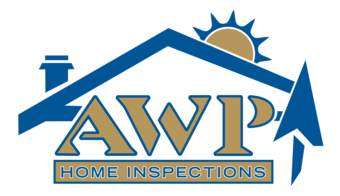Your house should be your family’s sanctuary. Unfortunately, many homes have hidden dangers contributing to unhealthy or unsafe living spaces. Use these tips to create a safe and healthy home for you and your family.
Create a Safe and Healthy Home
1. Test for Radon and Lead Paint
Radon is a carcinogenic radioactive gas that is the second leading cause of lung cancer in the United States. Because it is colorless and odorless, you won’t know your home has radon unless you test for it. If the test comes back at unsafe levels, have a professional install a radon mitigation system to make yours a safe and healthy home.
If your home was built before 1978, have your walls and trim tested for lead paint. Ingesting lead paint is dangerous because it can damage the brain and kidneys, especially in young children.
2. For a Healthy and Safe Home, Eliminate Mold
Mold spores indoors can cause allergic reactions in people who are sensitive to them. The most common symptoms are nasal congestion, a runny nose, coughing, throat irritation, and sneezing. Black mold can cause more severe problems, especially in people with compromised immune systems.
A healthy and safe home should be mold-free. If you see signs of mold, it is likely the area is water-damaged. To eliminate the mold, remove the source of moisture. The humidity in your home may be too high or there could be a plumbing leak or water intrusion from a damaged roof. Keep your home dry to prevent mold growth.
3. Install Smoke and CO Detectors
Install smoke and carbon monoxide detectors throughout your home. Combination detectors are available that can detect both.
Install smoke detectors in every bedroom, in the hallway outside the bedrooms, and on every level of your home. Hardwired detectors with battery backups are your best option, although battery-powered ones are easy to install and also work well. Test your smoke alarms once a month and replace the batteries twice a year to keep them in working order.
4. Avoid Harmful VOCs
Volatile organic compounds, also known as VOCs, are gases produced by solids or liquids. Some of these gases contain chemicals that adversely affect human health. VOCs become concentrated inside the home because the air is recirculated within a closed environment.
Staying away from VOCs requires thought and vigilance since they are found in many cleaners, air fresheners, aerosol sprays, and craft supplies. Purchase paints and household cleaners that are VOC-free when possible. Open the windows each day to let fresh air in and reduce pollutants. Use appropriate safety gear when handling VOC-emitting substances such as fuel, paint stripper, and paint.
5. Filter Drinking Water for a Healthy Home
Depending on its source, the water you use for drinking, cooking, and bathing could be contaminated with bacteria, minerals, and chemicals. For a healthy and safe home, install a water filtration system. These purifiers can be installed at the faucet or for the whole house.
6. Adjust Your Water Heater Temperature
Check the temperature on your water heater. It should not exceed 120 degrees Fahrenheit. If it’s set higher, there’s an increased risk of someone being scalded while filling a bath or taking a shower.
Some showers and tubs have anti-scald devices installed behind the faucet. If your home doesn’t have this feature, have a plumber install them for you.
7. Dust and Vacuum Frequently
Dust contains mold spores, pollen, dust mites, and other allergy-causing contaminants. Dusting and vacuuming frequently help to reduce indoor allergens, especially if you use a vacuum with a HEPA filter. Launder bed sheets, draperies, and other household fabrics frequently to remove dust and dander. Routine, thorough housecleaning keeps your living spaces healthier and your air cleaner.
AWP Home Inspections offers home inspection services, including mold testing and water screening, in West Central and Central Indiana. Contact us to request our services.

